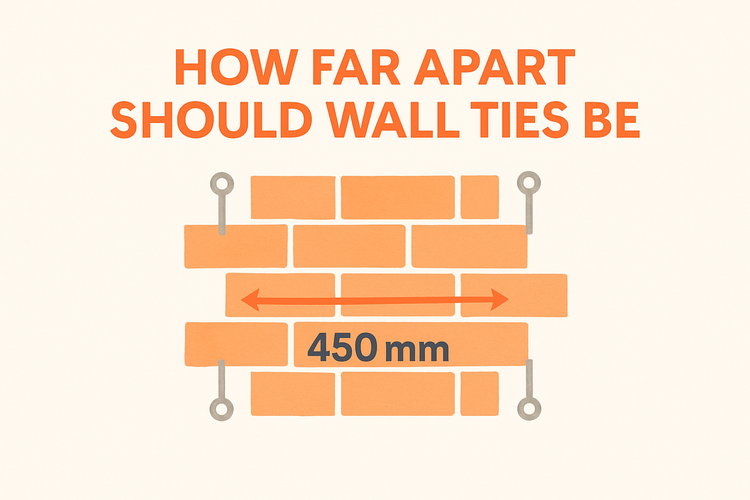How Far Apart Should Wall Ties Be

Understanding Wall Ties: Purpose and Functionality
Wall ties are small components with a big responsibility in masonry construction. Their primary purpose is to connect the outer masonry leaf with structural backing, ensuring strength and structural integrity across cavity walls.
The function of wall ties extends beyond mere connection. They help distribute loads across the wall components and reduce the risk of movement due to thermal expansion or wind pressure. This stability is crucial in maintaining the wall's straightness and preventing cracks, particularly in multi-storey buildings. Additionally, high-quality Masonry Connectors and Wall Ties serve as a means of moisture management by allowing any penetrating moisture to drain away safely.
Standard Spacing Guidelines for Wall Ties
Spacing is a vital factor in the placement of wall ties. Generally, the recommended horizontal spacing is 900mm, while the vertical spacing is 450mm. This configuration supports a typical wall area of 2.5 ties per square metre.
However, the specifics can differ depending on the wall type, whether it's a traditional brick cavity wall or a timber-framed structure. In areas prone to high wind or movement, additional wall ties may be necessary to enhance performance. In cavity masonry construction, properly spaced ties installed during the build process ensure the load is efficiently transferred, minimizing the potential for structural failure.
Always refer to building regulations and engineering specifications when determining spacing requirements, particularly for specialized structures. Structural engineers might even suggest using more robust components, such as High Wind ties & timber connectors, in areas with severe weather conditions.
Wall Tie Placement Near Openings and Corners
Window and door openings disrupt the regular flow of wall ties and therefore require thoughtful placement. These openings are considered weakened zones of the wall and demand added reinforcement.
Standard practice advises placing wall ties no more than 300mm from the edge of all openings. They should be installed no further than 225mm away from any vertical edge to ensure edge support. Care should be taken to place additional ties vertically every 225mm along the opening to reinforce structural cohesion and minimize cracking.
Corners also act as stress concentration points. That's why additional ties must be embedded into both intersecting walls, often in staggered arrangements to offer equal force distribution. In timber construction, you may consider specialized angle fixings such as Angle Brackets for securing these zones further.
Types of Wall Ties for Different Applications
Wall ties come in a range of shapes and materials to cater to various construction requirements. The type you choose directly affects performance, longevity, and compatibility with the building materials.
For cavity walls in masonry, stainless steel wall ties are commonly preferred due to their corrosion resistance and tensile strength. On the other hand, for timber frame buildings, there are purpose-designed ties that offer both flexibility and strength. Some advanced products also include features to minimize thermal bridging, a critical consideration in energy-efficient designs.
Selecting the right wall tie involves assessing your project specifications, including cavity width, exposure zone, and building height. For higher walls or buildings exposed to strong winds, reinforced wall ties or Timber Frame Connectors offer ideal support. The right choice ensures the wall tie complements the whole build system.
Common Mistakes When Installing Wall Ties
Improper installation of wall ties can compromise the entire wall structure. One frequent mistake is failing to adhere to the correct spacing and placement guidelines, which can result in bulging or cracked masonry work.
Another issue involves the orientation of wall ties. Ties must be installed with a slight downward slope to the outer leaf to facilitate water drainage. Installing them flat or sloped incorrectly can allow moisture to transfer to the internal wall, leading to damp and internal structural damage. It's also important to choose compatible materials to avoid corrosion due to electrochemical reactions.
Failure to embed wall ties deep enough into the mortar beds can cause tie detachment, especially in high-load or high-wind conditions. To prevent this, use tested and certified wall ties along with trusted fixings like screws and nails. Double-check all relevant building codes and possibly consult professional guidance to avoid these pitfalls.
